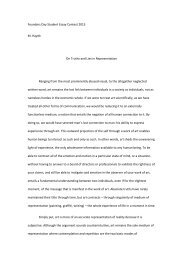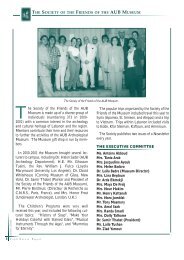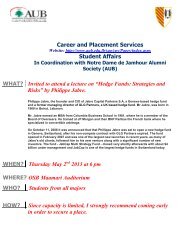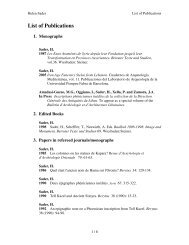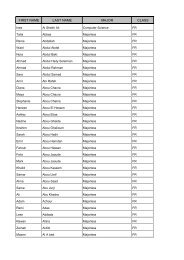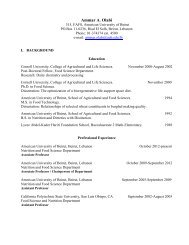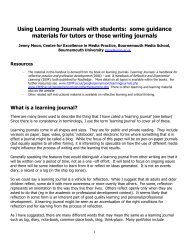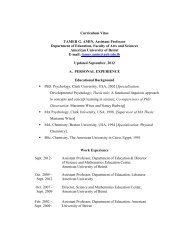The IX t h Makassed Medical Congress - American University of Beirut
The IX t h Makassed Medical Congress - American University of Beirut
The IX t h Makassed Medical Congress - American University of Beirut
You also want an ePaper? Increase the reach of your titles
YUMPU automatically turns print PDFs into web optimized ePapers that Google loves.
“STATUS ON T-EVAR” (THORACIC ENDOVASCULAR ANEURYSM REPAIR)<br />
Fady Haddad MD<br />
Thoracic Aortic pathologies (Aneurysms, Dissections, Traumatic ruptures) remain challenging<br />
despite substantial improvements in surgical and critical care techniques.<br />
Over the past few years, endovascular approach (T-EVAR: Thoracic Endovascular Aneurysm<br />
Repair) rapidly became the first option in most centers, when anatomically feasible, specially<br />
with short and mid-term data showing reduced aneurysm related mortality and peri-procedural<br />
morbidity and reduced incidence <strong>of</strong> spinal cord ischemia (SCI). With the encouraging results,<br />
endovascular management is being extended to more difficult anatomy beyond the original IFU,<br />
with the combination <strong>of</strong> “hybrid procedures” or endovascular branched devices. Today there<br />
are already three devices in the US that are FDA approved for T-EVAR, and others are under<br />
clinical trials.<br />
Indications, procedure and outcome <strong>of</strong> T-EVAR will be discussed and a summarized algorithm for<br />
approach to a patient with TAA will be presented.<br />
THE RADIA APPROACH IN PCI<br />
Mohammad Zgheib M.D<br />
<strong>The</strong> trans-radial procedure is <strong>of</strong>ten associated with improved patient’s safety and comfort and<br />
typically results in overall fewer bleeding complications. Over the past 30 years, trans-radial<br />
vascular access for coronary angiography and intervention has flourished in many countries<br />
while still accounting for less than 2% <strong>of</strong> all cases performed in the United States. <strong>The</strong> benefits <strong>of</strong><br />
trans-radial access include decreased bleeding risk, increased patient comfort, lessened postprocedure<br />
nursing workload, and decreased hospital costs. <strong>The</strong> reasons why the trans-radial<br />
approach has not caught on in the US and worldwide are unclear, but are probably related to<br />
physician and ancillary staff’s comfort with femoral access, apprehension toward change, and<br />
higher operator radiation exposure. However, once the procedure is mastered, the operator<br />
and staff become extremely comfortable with the technique and radiation exposure can be<br />
substantially reduced. Although the femoral approach is more common, cardiac catheterization<br />
via femoral access demands greater post-procedural nursing care, is limited by prolonged<br />
bed rest (usually about 4 hours), and delays discharge. Femoral access is also more frequently<br />
associated with increased back pain, urinary retention, delayed ambulation, and neuropathy. To<br />
overcome some <strong>of</strong> these limitations, many operators have adopted the use <strong>of</strong> vascular closure<br />
devices, but published data have consistently shown that these devices are associated with<br />
the same or increased hemorrhagic risks in comparison with manual compression. In addition,<br />
rare complications such as infections, femoral artery stenosis, arterial laceration, uncontrolled<br />
bleeding, pseudo-aneurysm, arterio-venous fistula, and device embolism and limb ischemia<br />
have all been reported with the use <strong>of</strong> vascular closure devices. An increased awareness <strong>of</strong> the<br />
advantages <strong>of</strong> trans-radial catheterization is therefore necessary in order for interventionalists to<br />
adopt this safe and effective technique.<br />
95






